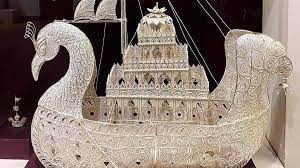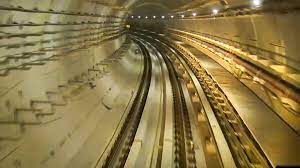Today’s Current Affairs: 8th Mar 2024 for UPSC IAS exams, State PSC exams, SSC CGL, State SSC, RRB, Railways, Banking Exam & IBPS, etc
Table of Contents
Chakshu And The Digital Intelligence Platform : Department Of Telecommunications

The Department of Telecommunications (DoT) introduced two initiatives, Chakshu and the Digital Intelligence Platform (DIP), to combat spam and fraud calls through the Sanchar Saathi portal.
- Chakshu is accessible at sancharsaathi.gov.in/sfc, facilitating citizens to report suspicious communications.
- The platform allows users to report various types of fraud, including those related to bank accounts, payment wallets, SIM cards, gas and electricity connections, KYC updates, impersonation, and sextortion.
- The primary objective of Chakshu is to enable proactive reporting of suspicious activities, contributing to the prevention and mitigation of telecom-related fraud and spam calls.
- Telecom Regulatory Authority of India (TRAI) is working on developing an app for the Chakshu platform, further streamlining the reporting process for users.
- The DIP is a secure and integrated platform created by the DoT for curbing the misuse of telecom resources and data through intelligence sharing and information exchange among the stakeholders covering a wide spectrum of telecom service providers, law enforcement agencies (LEAs), banks and financial institutions.
- It would be a non-public data-sharing resource for “Telecom Service Providers (TSPs), LEAs, banks and financial institutions, social media platforms, identity document issuing authorities etc.
INS Jatayu : Highlights

The commissioning of INS Jatayu, an upgraded naval base in the Lakshadweep Islands, marks a significant development in India’s maritime security strategy, particularly in the context of growing Chinese influence in the Indian Ocean Region.
- The Indian Navy commissioned its first MH-60R multi-role helicopter squadron Indian Naval Air Squadron (INAS) 334 at Kochi, a major capability boost for its rotary fleet and its anti-submarine warfare capabilities.
- INS Jatayu, formerly Naval Detachment Minicoy, is commissioned as an upgraded naval base on Minicoy Island in the Lakshadweep archipelago.
- It will operate under the operational control of the Naval Officer in Charge (Lakshadweep), Southern Naval Command.
- The base enhances the operational reach of the Indian Navy in the Indian Ocean, bolstering its capabilities for anti-piracy, anti-narcotics, and surveillance operations.
- Situated in Minicoy, the southernmost atoll of the Lakshadweep archipelago, INS Jatayu strategically overlooks vital Sea Lines of Communications (SLOCs), strengthening India’s maritime presence in the region.
- In light of China’s increasing presence in the Indian Ocean, INS Jatayu reinforces India’s ability to counterbalance and deter any attempts to undermine its maritime dominance and territorial integrity.
- INS Jatayu will effectively be the country’s second naval base in Lakshadweep. The Navy’s first base on the islands, INS Dweeprakshak in Kavaratti, was commissioned in 2012.
- INS Jatayu will be equipped with additional infrastructure, including an airfield and personnel housing, to support naval operations and ensure comprehensive security coverage.
- Minicoy Island, where INS Jatayu is located, sits at the intersection of crucial Sea Lines of Communications (SLOCs) like the Eight Degree Channel and the Nine Degree Channel, making it susceptible to maritime pollution due to heavy maritime traffic.
- Eight Degree Channel separates Indian Minicoy island from Maldives.
- The Nine Degree Channel separates the island of Minicoy from the Lakshadweep archipelago
Women, Business And The Law 2024 : World Bank Report

The World Bank (WB) Group has released a report titled-Women, Business and the Law 2024, presenting in-depth analysis of the challenges obstructing women’s entry into the global workforce, hindering their ability to contribute to prosperity for themselves, their families and their communities.
Report:
- Its indexes align areas of the law and public policy instruments with the economic decisions that women make throughout their lives and careers, identifying where and in what areas women continue to face hurdles.
- It has 10 indicators- Safety, Mobility, Workplace, Pay, Child Care, Marriage, Parenthood, Entrepreneurship, Assets, and Pension.
- Safety from violence and access to childcare services are very crucial indicators.
- Among the Organisation for Economic Co-operation and Development (OECD) high-income economies, 11 scored 90 or above, with Italy leading at 95, followed by New Zealand and Portugal with 92.5.
- By contrast, more than 37 economies provide women with less than half of the legal rights enjoyed by men, affecting approximately half a billion women. Notably, high-income economies have an average score of 75.4.
- Upper-middle-income economies follow closely, with an average score of 66.8. The gap in scores between the highest- and lowest scoring economies is most pronounced in high-income economies, with a substantial difference of 75 points.
- Women around the world enjoy only 64% of the legal protections that men do, when legal differences involving violence and childcare are taken into account. This is even lower than the previous estimate of 77%.
- Even though many countries have enacted laws promoting gender equality, there is a significant gap between these laws and the actual experiences of women.
- 98 economies have enacted legislation mandating equal pay for women for work of equal value.
- Yet only 35 economies, fewer than one out of every five, have adopted pay-transparency measures to address the pay gap.
- Togo has been a standout among Sub-Saharan economies, enacting laws that give women roughly 77% of the rights available to men, more than any other country in the continent.
- Although 151 economies have laws in place prohibiting sexual harassment in the workplace, just 39 have laws prohibiting it in public spaces. This often prevents women from using public transportation to get to work.
- Women spend an average of 2.4 more hours a day on unpaid care work than men, much of it on the care of children.
- Only 78 economies,fewer than half, provide some financial or tax support for parents with young children.
- Only 62 economies—fewer than a third—have quality standards governing childcare services, without which women might think twice about going to work while they have children in their care.
The Unjust Climate : FAO Report

The Food and Agriculture Organization of the United Nations (FAO), has released a report titled- The Unjust Climate, shows how the effects of Climate Change on income and adaptation in rural areas vary with gender, wealth and age.
- FAO analyzed socioeconomic data from over 100,000 rural households representing more than 950 million people across 24 LMICs (Lower Middle Income Countries).
- The study integrated this information with 70 years of georeferenced daily precipitation and temperature data to examine the impacts of climate stressors on incomes, labour, and adaptation strategies, differentiating based on wealth, gender, and age.
- Every day of extreme heat results in poor rural households losing 2.4% of on-farm incomes, 1.1% of crop value, and 1.5% of off-farm income compared to non-poor households across India and 23 other LMICs (Lower Middle Income Countries).
- A 1°C increase in long-term temperatures would push rural poor households to rely more on climate-dependent agriculture, leading to a 33% decrease in off-farm incomes.
- Similarly, every day of extreme Precipitation causes poor households to lose 0.8% of their incomes relative to non-poor households, mainly driven by losses in off-farm incomes.
- In an average year, poor households lose 5% of their total income due to Heat Stress and 4.4% due to floods compared to better-off households.
- Floods and heat stress widen the income gap between poor and non-poor households in rural areas by approximately USD 21 billion and USD 20 billion a year, respectively.
- Extreme weather events push poor rural households to adopt maladaptive coping strategies, including distress sale of livestock and redirecting expenditures away from their farms.
- Less than 1% of Nationally Determined Contributions (NDC) and national adaptation plans (NAP) of the 24 analysed countries mention poor people, and only about 6% refer to farmers in rural communities.
- Only 7.5% of tracked climate finance in 2017-18 went towards climate change adaptation, with less than 3% allocated to agriculture, forestry, and other land uses.
Majuli asks : GI Tag

The traditional Majuli masks and Majuli manuscript painting in Assam were given a Geographical Indication (GI) tag.
- Majuli are handmade masks traditionally used to depict characters in bhaonas, or theatrical performances with devotional messages under the neo-Vaishnavite tradition, introduced by the 15th-16th century reformer saint Srimanta Sankardeva.
- Srimanta Sankardeva established this art of masks through a play called Chinha Jatra.
- The masks can depict gods, goddesses, demons, animals and birds — Ravana, Garuda, Narasimha, Hanuman, Varaha Surpanakha all feature among the masks.
- They can range in size from those covering just the face (mukh mukha), to those covering the whole head and body of the performer (cho mukha).
- The masks are made of bamboo, clay, dung, cloth, cotton, wood and other materials available in the riverine surroundings of their makers
- Traditional practitioners are working to take the art out of their traditional place in sattras, or monasteries, and give them a new, contemporary life.
- Majuli manuscript painting also originating in the 16th century done on sanchi pat, or manuscripts made of the bark of the sanchi or agar tree, using homemade ink.
NITI For States Platform:

Minister of Communications, Railways, and Electronics & Information Technology will launch NITI Aayog’s NITI For States platform and Viksit Bharat Strategy Room.
- NITI For States Platform is a cross-sectoral knowledge platform designed to become a Digital Public Infrastructure (DPI) for Policy and Good Governance.
- The significant features of the platform include a multi-sectoral live repository of Best Practices, Policy documents, datasets, data profiles and NITI publications.
- The knowledge products on the platform span 10 sectors including Agriculture, Education, Energy, Health, Livelihoods and Skilling, Manufacturing, MSME, Tourism, Urban, Water resources & WASH across two cross-cutting themes – Gender and Climate Change.
- The platform is an intuitive and user-friendly interface that allows users to easily navigate; and it is accessible through multiple devices including mobile phones.
- This platform will facilitate the digital transformation of governance by equipping government officials with robust, contextually relevant, and actionable knowledge and insights, thereby enhancing the quality of their decision-making.
- It will also support cutting-edge level functionaries like district collectors and block-level functionaries by giving them access to innovative best practices across various States and UTs.
Rupa Tarakasi: GI Tag

The famous silver filigree (Rupa Tarakasi) of the millennium Cuttack city in Odisha recently received the Geographical Indication (GI) tag.
- Rupa Tarakasi is one of the most exquisite silver crafts.
- This centuries-old, sophisticated craft is practiced in the silver city of Cuttack, Odisha.
- It is known to have existed as far back as the 12th century.
- The art form received considerable patronage under the Mughals.
- In this work of craft, silver bricks are transformed into thin, fine wires (tara) or foils, from which silver filigree is made with all designs (kasi).
- While different grades of silver are used in the main metal alloy, the craftsmen also use other metals like copper, zinc, cadmium and tin.
- The artists involved with this filigree work are called “Rupa Banias” or “Roupyakaras” (in Odia).
- This craftsmanship extends to creating various items, including jewellery worn by Odissi dancers, decorative artifacts, accessories, and religious and cultural pieces
India’s First Under-River Metro Tunnel:

Prime Minister recently inaugurated a metro train service in Kolkata, marking the opening of India’s first under-river metro tunnel.
- India’s First Under-River Metro Tunnel is a part of Kolkata Metro’s East-West Corridor.
- It passes under the Hooghly River and forms part of section from Howrah Maidan to Esplanade.
- The stretch also has the deepest metro station in the country, the Howrah Maidan station, at 32 metres below ground level.
- The Hooghly River, also known as the Bhagirathi-Hoogly and Kati-Ganga Rivers, is one of the significant rivers in West Bengal.
- It is a distributary or arm of the Ganges River.
- It is formed in Murshidabad, where the Ganga splits into two parts, while the part flowing through Bangladesh is called the Padma.
- The Hooghly River is silted up above Kolkata, and the river flows to the west and south to the estuary of Rupnarayan and then south and southwest to enter the Bay of Bengal through a 32-kilometer-wide estuary.
- The Hooghly’s majority of water comes from the Farakka Feeder Canal instead of natural water.
- The Farakka Barrage is a dam that diverts water from the Ganges into a canal near the town of Tildanga in Malda district. This supplies the Hooghly with adequate water even in the dry season.




